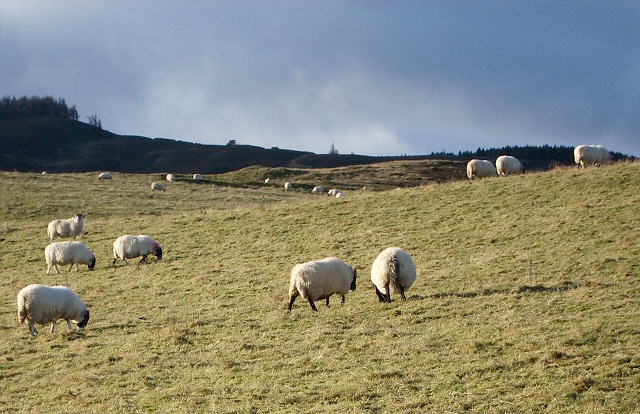
The number of new season lambs reaching the market has increased due to the good weather in many parts of the UK this spring, according to the latest analysis by Quality Meat Scotland (QMS).
The number of lambs reaching Scottish auctions is currently around 15% higher than last year and English and Welsh auctions have seen supplies around 25% higher, said Stuart Ashworth, QMS’s Head of Economics Services. Compared to two years ago, Scottish supplies are lower while England and Wales are better supplied.
“It is pleasing for producers that auction prices are currently matching last year's and are well up on two years ago alongside a better supplied market,” commented Mr Ashworth.
“Nevertheless, as volume increases - and typically deliveries in mid-June are seven times the level of mid-May in Scotland and double in England and Wales - prices inevitably begin to fall. Producers will be hoping the fall during June is more in line with the 5% fall during June 2013 than the 9% fall during June 2012.”
Across Europe, firm lamb prices are being repeated, helping to support the whole market.
“French farmgate prices are currently 8% higher than last year while Spain has seen even bigger increases for heavy lambs. Producer prices are also much higher than last year in important UK export markets like Belgium and Germany,” said Mr Ashworth.
“Irish prices, however, have not benefited to the same extent. Although Irish lamb prices have increased in recent weeks, they are marginally below last year’s level. The number of lambs reaching Irish abattoirs in recent weeks has been considerably higher than last year, slowing down the price movement in Ireland.”
Nevertheless, the retail market remains challenging with the volume retailed over the past 12 months little changed on the year, although there was some growth in demand for lamb in the run up to Easter, observed Mr Ashworth.
“Sheepmeat demand in France is also weak but reduced production in France, down 16% in the first quarter although production increased in April and the run up to Easter, is helping to support producer prices and drawing in some imports.”
With the European market being very important to the Scottish sheep industry, the strengthening of sterling to a level where a euro currently buys about 82p compared to about 85p a year ago, means that exporters have to ask for more euros to get the same sterling value as last year, or accept less sterling. The current exchange rate level will also temper increases in lamb price as the volume of lambs reaching the market builds.
However, according to Mr Ashworth, European sheepmeat production in the second half of 2014 is collectively likely to have hardly changed from last year with declines in France and Spain offset by some growth in Italy and the UK.
Meanwhile New Zealand continues to build trade with China at the expense of Europe, leaving Europe as a market for more expensive cuts. Over the past six months New Zealand lamb was leaving for Europe at around £5,000 per tonne compared to around £3,000 per tonne for the Chinese market.
“These factors should help to support prices at similar levels to last year. Prices are also likely to be offered some support during the Muslim festival of Ramadan which this year begins on the 29th of June,” said Mr Ashworth.
